Are Inflammatory Cytokines Elicited by the Covid Vaccines Getting into Breastmilk?
A recent study seems to indicate that the answer might be yes.
Yet another study has joined the growing smorgasbord of literature chipping away at the narrative that there are no potential safety concerns with the covid vaccines for pregnant or breastfeeding mothers. A team of distinguished Romanian researchers tested the breastmilk of 65 mothers - 48 who were either vaccinated or recovered from a covid infection, and a 17-mother control group - to see if there were inflammatory cytokines present.
This is a serious point of inquiry - there are numerous reported medical events in breastfeeding babies whose only known potential toxic exposure was to a covid vaccine via the mother. Was her breastmilk the vehicle for conveying toxic vaccine products or byproducts?
Cytokines and Chemokines in Breastmilk of SARS-CoV-2 Infected or COVID-19 Vaccinated Mothers
https://pubmed.ncbi.nlm.nih.gov/36560410/
I say distinguished because firstly, there are 12 authors on the one paper; and secondly, the final author listed has 50 studies on PubMed alone, the sixth has 54, and the third author has an astounding *128* papers to her name (!!). Plus the rest of the authors also have authorship on multiple studies. So this was not a random two or three academics spitballing a poorly cobbled together study.
Basic overview of the study
This is just a general summary, I am skipping a lot of the more nitty-gritty specifics (that would be painful to have to read about; you’re welcome).
Of the 48 women whose breastmilk was being studied, 26 were recently vaccinated, and 22 were recently infected with covid. Critically, 16/22 of the covid infection group were vaccinated, something we will return to later. They compared the milk samples of these two groups to milk drawn from a control group of mothers (17) who were unvaccinated & had no known history of covid infection (10/17 were negative for covid antibodies).
The objective of this study was to see if any inflammatory cytokines - ‘bad’ stuff - were present in the breastmilk of mothers who either recently had covid or vaccination & transferred to breastfeeding babies. Think of the dreaded “cytokine storm” emblematic of the severe covid disease runaway inflammation - juicing up little Timmy or Sally with a bunch of these bad boy cytokines would probably not enhance their health or well-being. In the words of the authors:
The COVID-19 disease and anti-SARS-CoV-2 vaccination were accompanied by alterations in several inflammatory markers. The aim of our research was to check to what extent such cytokines are transferred to infants via the breastmilk of SARS-CoV-2-infected or vaccinated mothers. Thus, we wanted to check if breastfeeding is safe during SARS-CoV-2 infection or after COVID-19 mRNA-vaccination.
It is well documented that for COVID-19 infections, the levels of different pro-inflammatory cytokines can increase steeply, sometimes culminating in a “cytokine storm” [2,3,4,5,6,7,8,9]. We were interested in examining the response of the organism against SARS-CoV-2, as well as the response against the vaccine stimuli reflected in human breastmilk.
Unlike in the US or other Western countries, in Romania it is apparently permissible to inquire about the safety of the precious covid vaccines.
Methodology of the study - what they actually did
The researchers took one milk sample from the control group mothers, and took 2 samples at 30 and 60 days post covid symptom onset or the date of booster vaccination. They tested these samples for the presence of 10 cytokines: TNF-α, IL-6, IFN-β, IL-10, IL-1β, IFN-γ, IL-2, GM-CSF, IL-5 and IP-10. They also tested for IL-10, which is an anti-inflammatory cytokine; and tested for the presence of anti-spike protein IgG antibodies. (“The clinical significance of highly elevated IL-10 amounts in the serum of COVID-19 patients has been generally regarded as an anti-inflammatory or immune-inhibitory mechanism [43].”)
What questions should we be asking in order to properly contextualize the findings of this study?
There are three questions we would need to answer in order to assess the possibility of the transfer of harmful inflammatory cytokines through breastmilk from a vaccinated or covid-infected mother to baby, in sufficient quantity to cause damage:
Are inflammatory cytokines secreted into milk
Are levels of inflammatory cytokines secreted into milk correlated to vaccination/infection - ie, do either of these precipitate inflammatory cytokines finding their way into breastmilk? (In my mind I see the kid in Charlie & the Chocolate Factory who gets stuck in the pipes the liquid chocolate is pumped through as a stand in for an inflammatory cytokine straying into the forbidden territory of milk glands.)
Are the levels of these cytokines present in the breastmilk sufficient to cause damage to a breastfeeding baby?
With these in mind, let’s see what the study found.
RESULTS - Short Version
For those of you who do not want to slog through a somewhat lengthy analysis full of technical information:
The study did find elevated levels of some of the cytokines they were looking for in the breastmilk of a few mothers from both the vaccinated and infected groups. The authors (unsurprisingly) spun this result and framed it as ‘we didn’t find anything statistically significant so there’s nothing to worry about’.
Since the lack of statistical significance of their findings does not at all indicate that their findings are not true, this study actually is quite concerning, because the most likely and straightforward interpretation of their findings is that in at least some women, their breastmilk will contain elevated levels of inflammatory cytokines, which can potentially be harmful to breastfeeding infants. There may also be other adverse pathologies indicated as well.
Therefore, this study should prompt further more robust studies adequately powered to determine if and to what degree the breastmilk of vaccinated (and recently infected) mothers is contaminated with inflammatory cytokines. It should also prompt proper investigation and studies to determine what the safe level of the various inflammatory cytokines in breastmilk are, if any.
RESULTS - Long(er) Version
Here is how the authors described their own results (selected excerpts):
Cytokines triggered by either SARS-CoV-2 in mild COVID-19-affected patients or vaccinated volunteers were not transferred in high concentrations to infants via human breastmilk 30 and 60 days after the onset of the disease, respectively.
TNF-α, IL-6, IFN-β, IL-10, IL-1β, IFN-γ, IL-2, GM-CSF and IL-5 concentrations were in the reference range in the breastmilk of anti-SARS-CoV-2-vaccinated or SARS-CoV-2-infected mothers. IP-10 is secreted in the breastmilk of all mothers in high concentrations. TNF-α and IL-2 levels were higher in infected subjects than in vaccinated ones or in the control group, but they are still within the reference interval.
The vaccine, the manifest disease, the age of the breastfed child, the mother’s parity and maternal age contributed to the variation. The type of birth had no impact on cytokine concentrations.
Anti-S1 RBD IgG is secreted for at least 60 days in both SARS-CoV-2-infected or vaccinated mothers.
The cytokine concentrations of infected and previously vaccinated mothers did not significantly increase compared to those of the unvaccinated and infected mothers.
(For the record, this is not the first study to show cytokines in breastmilk.)
The really noteworthy finding here is that the cytokine levels of a few of the inflammatory (‘bad’) cytokines are definitely elevated above the control group in both the covid-infected & the vaccinated groups.
The authors further observe that the milk from the women who had covid (and of whom 16/22 had been vaccinated) had higher cytokine levels overall than the milk from the women who were only vaccinated but not covid-infected:
In most of the samples, the concentrations of the tested cytokines were below the upper limit of the reference interval. However, we found that the concentrations of several cytokines were elevated in the breastmilk of some infected subjects. TNF-α increased in 22.7% of the infected mothers, resulting a mean value that is 5 times higher than the mean of the vaccinated or control groups. Interestingly, higher values of IL-6 were detected in all three groups; however, the average concentration per group was different. For instance, the mean IL-6 concentration value of COVID-19 mothers was 5 times higher than that of the vaccinated group, which in turn was five times higher than the control group.
The mean of IL-1β values for the infected subjects was 10 times higher than for vaccinated ones. This difference came from the high values recorded in five lactating and infected volunteers. Although the mean IL-2 was 5 times higher in infected mothers compared to the others, IL-2 concentrations did not exceed the upper reference value.
(IL-6 is the worst cytokine of the covid cytokine storm - definitely not one we want to give fluffy adorable babies an extra dose of.)
How much of the variation can be attributed to the covid infection as opposed to the prior vaccination, or the combination of both, is a good question.
And of course, the authors conclude that there’s nothing to worry about (conclusion cited at the end).
Does the study accurately describe its own findings?
Nope.
The way the study describes its findings is NOT an entirely accurate description of what the findings actually were.
Problem #1
The first problem is that 16/22 of the covid infected group were also vaccinated before their covid infection. The authors do acknowledge the potential for vaccine + infection to yield higher cytokine levels. However, they claim that there was no statistically significant difference between the 6 unvaccinated mothers and the 16 vaccinated mothers of the covid-infected group:
The group of SARS-CoV-2-infected mothers included 16 anti-SARS-CoV-2-vaccinated mothers prior to infection, while 6 were unvaccinated prior to infection. Vaccinated and infected mothers could have constituted a distinctive group due to the triple immunization (COVID-19 and two anti-COVID-19 vaccine doses). Since only six mothers were not vaccinated before COVID-19, we were unable to include them in a separate group due to the insufficient size of this group that would not have yielded statistically significant results. Although we expected enhanced responses in terms of cytokine milk transfers in mothers vaccinated before infection, the differences recorded between the two subgroups were not statistically significant.
The problem with this assertion is that just because something is not statistically significant does not mean that it is not true. The authors do not indicate anywhere in the study or supplementary materials which individual results are from the 6 unvaccinated infected mothers, which would be helpful to be able to see the *potential* differences we are talking about. The lack of statistical significance here is almost certainly only because of the small sample size. In other words, the difference between the infected vs vaccinated groups may well be on account of the 16 infected mothers who were also vaccinated.
Problem #2
A more profound limitation with this study is that they are only looking at healthy vaccinees (seemingly healthy for now anyway), which tells us nothing about people who suffer a vaccine injury. In other words, it is reasonable that someone with a vaccine injury (any type) would be more likely to have elevated levels of inflammatory cytokines than someone who did not suffer a vaccine injury.
It is inappropriate to simply extrapolate from uninjured vaccinees to the vaccine-injured that there aren’t elevated levels of inflammatory cytokines secreted into their breastmilk.
Problem #3
The third problem is that the authors are applying statistical adjustments to a tiny sample size. This has the effect of hiding some extreme individual outliers. I won’t belabor this point with a technical wordy description. Instead, we will demonstrate this using the more granular data included in the study’s supplementary materials.
The following is a chart showing the levels of the inflammatory cytokine TNF-α. Each colored circle represents the TNF-α levels in one mother. The ‘X’ shows the mean (this is what the authors were referring to in the study excerpt above). Most of the circles are clustered on top of each other at the bottom. However, you can see that there are two “medium” outliers in the vaccinated group and three in the infected group (indicated by green arrows). There are also two extreme outliers in the infected group (indicated by red arrows).
The IL-10 levels contain even more outliers:
(*I corrected a labeling error on this chart)
With IL-10, the vaccinated group actually has more outliers than the infected group. (I suspect that the extreme outlier pair at the top is the same woman/women, since it shows up in practically every cytokine they tested for.)
If you have 3 outliers in a group of 26, how can you just dismiss that as “statistically insignificant”? That’s 12%! In other words, if 12% of vaccinated mothers would get aberrantly elevated levels of IL-10 in their breastmilk, this is precisely the result you would expect to find.
Furthermore, if 2 of the outliers in the infected group are vaccinated (leaving out one of the outliers from the second sample) that would come out to 2/16, or. . . 13%.
For IL-6, the ringleader of the cytokine storm, we have 3 radical outliers:
Not terribly comforting.
These results raise a few questions:
Are the outliers merely fluky results, or do they indicate that a small % of vaccinated / infected mothers have concerning and unexpectedly high levels of inflammatory cytokines in their breastmilk?
Are the extreme outliers in the infected group vaccinated? The authors claim that the difference is not “statistically significant”. If the outliers are all vaccinated, this would be a very concerning finding that urgently requires further study to determine if this is s random blip or something real. And even if they are not vaccinated, it would still require urgent follow-up studies to figure out if there is a subset of recovered women who have elevated levels of inflammatory cytokines in their breastmilk; for how long; which types of women are more likely to have elevated cytokines; and so on.
What would the cytokine levels be if we analyzed samples from mothers with severe covid or who suffered a vaccine injury, who are more likely to have elevated levels of inflammatory cytokines in their blood? If, as the authors speculate, the milk cytokine content is simply a reflection of the cytokines in the blood, then it would stand to reason that mothers with severe covid or vaccine injury would probably have far more elevated levels of inflammatory cytokines in their breastmilk.
What are the cytokine levels in breastmilk right after vaccination or severe covid disease? Is there a “danger window” of the first few days post-vaccination where there are extremely elevated levels of inflammatory cytokines that can pose serious dangers to a breastfeeding baby?
What - if any - is the “safe” level of inflammatory cytokines in breastmilk?
Are there other cytokines or pro-inflammatory proteins not included in this study that might be getting into breastmilk?
The authors do offer some speculation as to the mechanistic basis whereby some nice, lovely but hotheaded cytokines can infiltrate breastmilk:
Overall, the mechanisms by which human cytokines reach into breastmilk remain elusive. We can only speculate that they can be excreted and their milk concentrations mirror, to a certain point, the serum ones.
However, if we consider data published by Narayanaswamy et al. (2022) [32] showing an increase in the IFNγ breastmilk concentration soon after vaccination, as this is an immune interferon, then there is a higher probability that this cytokine is transferred from blood to milk, and the milk concentration mirrors the blood concentration. If so, this mechanism of excretion could be extended to many other cytokines.
I did a really quick search on PubMed looking for studies that discuss cytokine production post-vaccination, but could not find much. The best result I got was the following study. . . in mice:
************************************
The authors had the chutzpah to completely ignore the implications for the vaccine’s likely causing cytokines to get into breastmilk. Worse, while they are somewhat dismissive of the possibility of covid infection leading to breastmilk cytokines (which is unwarranted), they at least include a sentence about ‘needing to investigate what happens in the context of severe covid disease’ -- they have nothing to say about the similarly dispositioned context of vaccine injuries (which are frequently inflammation-mediated conditions, or at least usually at minimum have an inflammatory pathological component).
Conclusions
Our study supports with scientific evidence the safety of breastfeeding in cases of mild COVID- 19 infection or vaccination. However, breastfeeding with severe COVID-19 should be further investigated. Therefore, we combine the official recommendations with scientific data and suggest not interrupting breastfeeding in cases of mild COVID-19 or after anti-SARS-CoV-2 vaccination. We also demonstrate the advantages of breastfeeding by highlighting that anti-SARS-CoV-2 antibodies are transferred after COVID-19 disease or vaccination.
Ultimately, this study’s findings are concerning but inconclusive. The authors stated opinion (or ode to the censors) that their study “supports with scientific evidence the safety of breastfeeding in cases of mild COVID- 19 infection or vaccination” is unwarranted and not itself supported by their own study. Especially in light of the various data, evidence and tsunami of anecdotes from around the world indicating that there are very profound complications to women’s reproductive physiology from the vaccines, these questions must be answered.




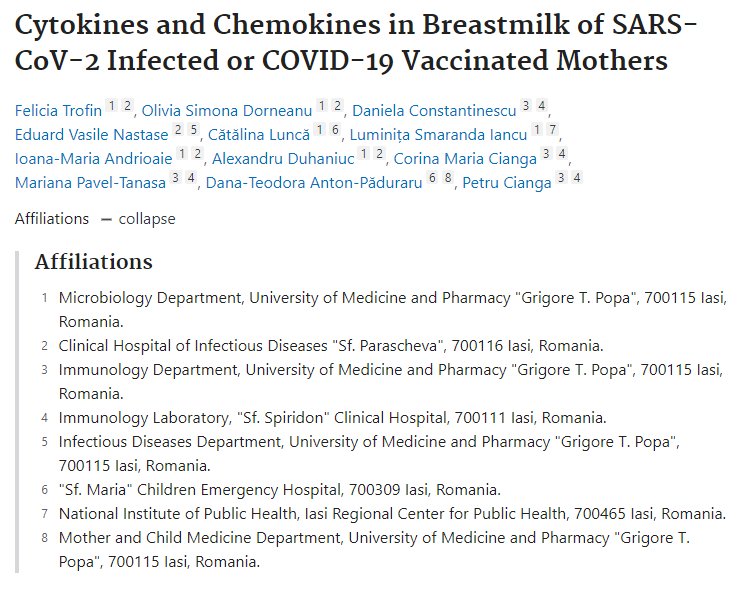
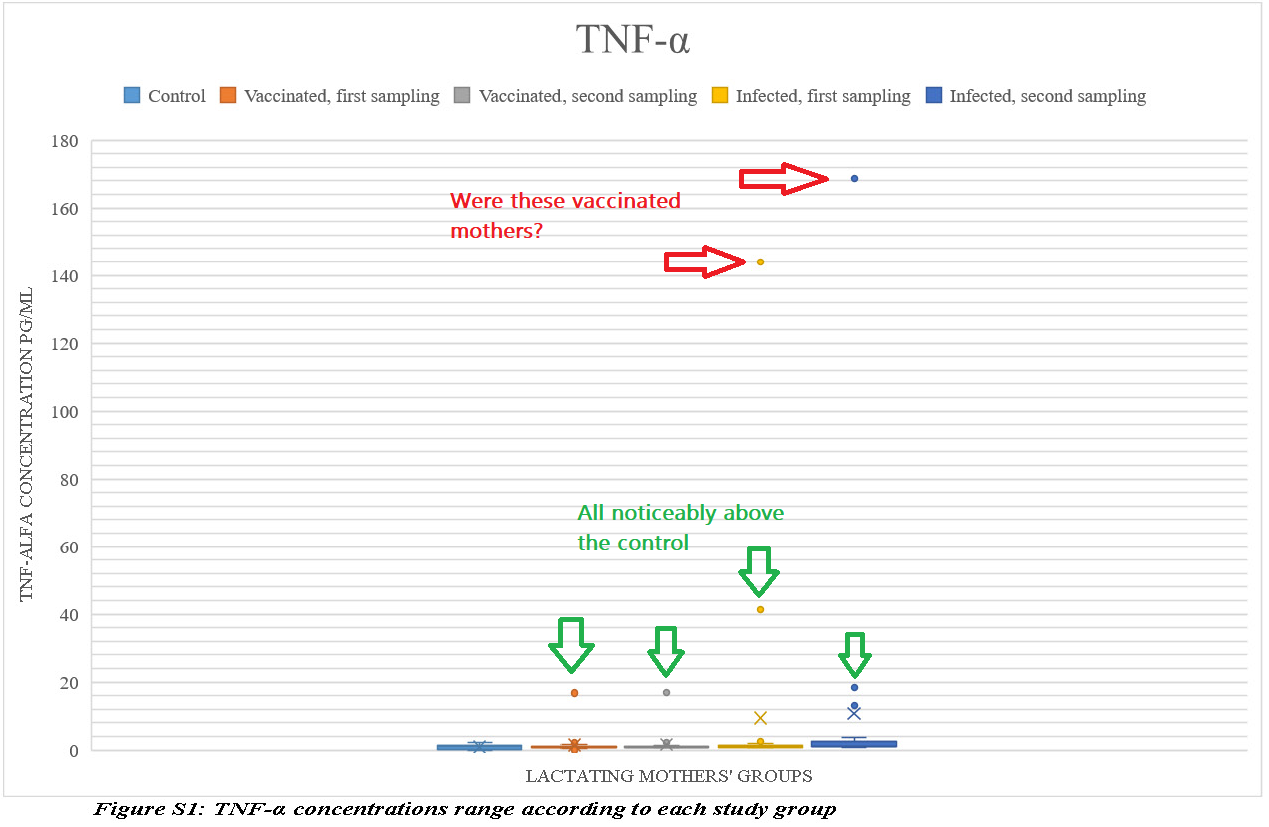
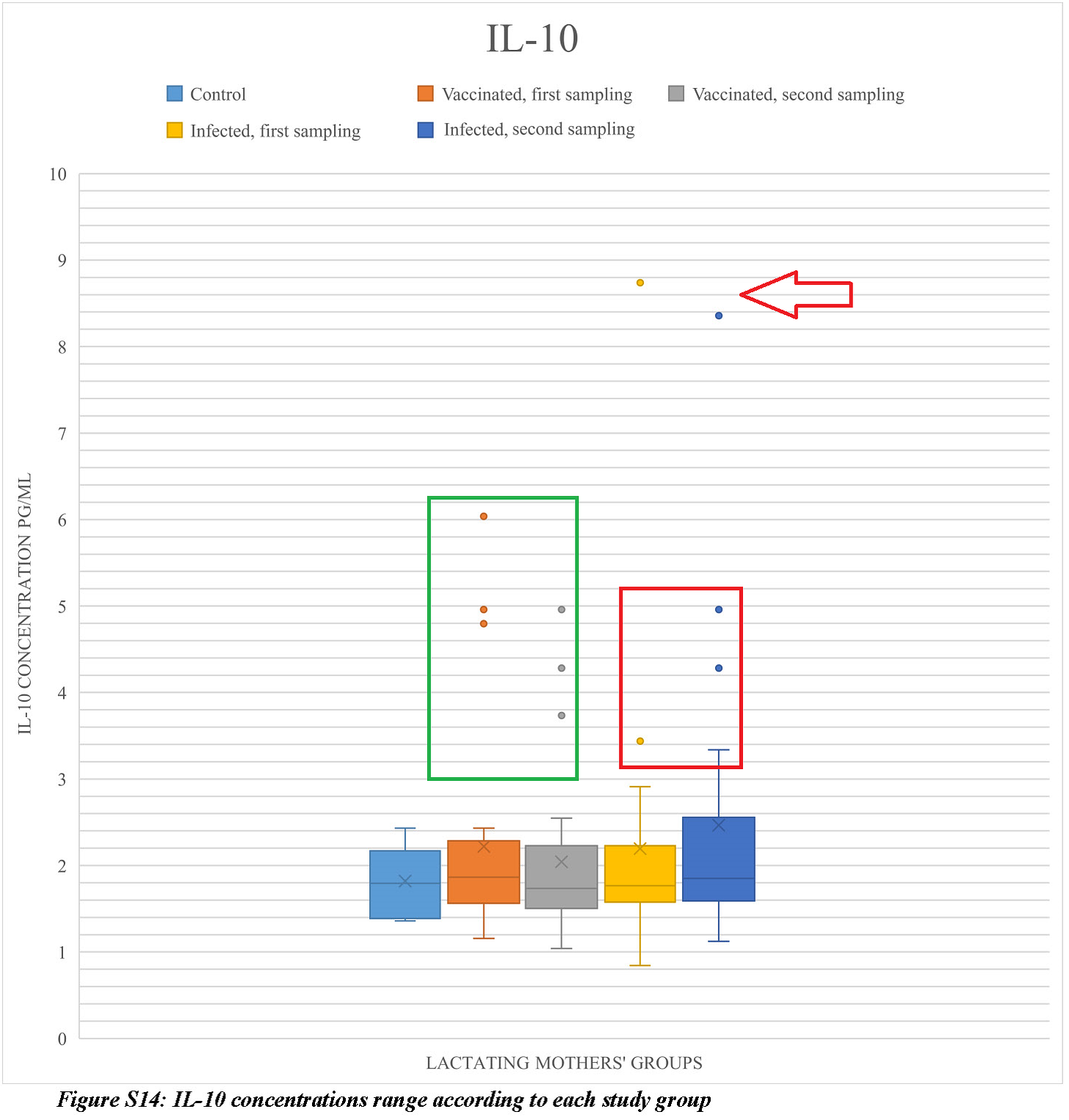
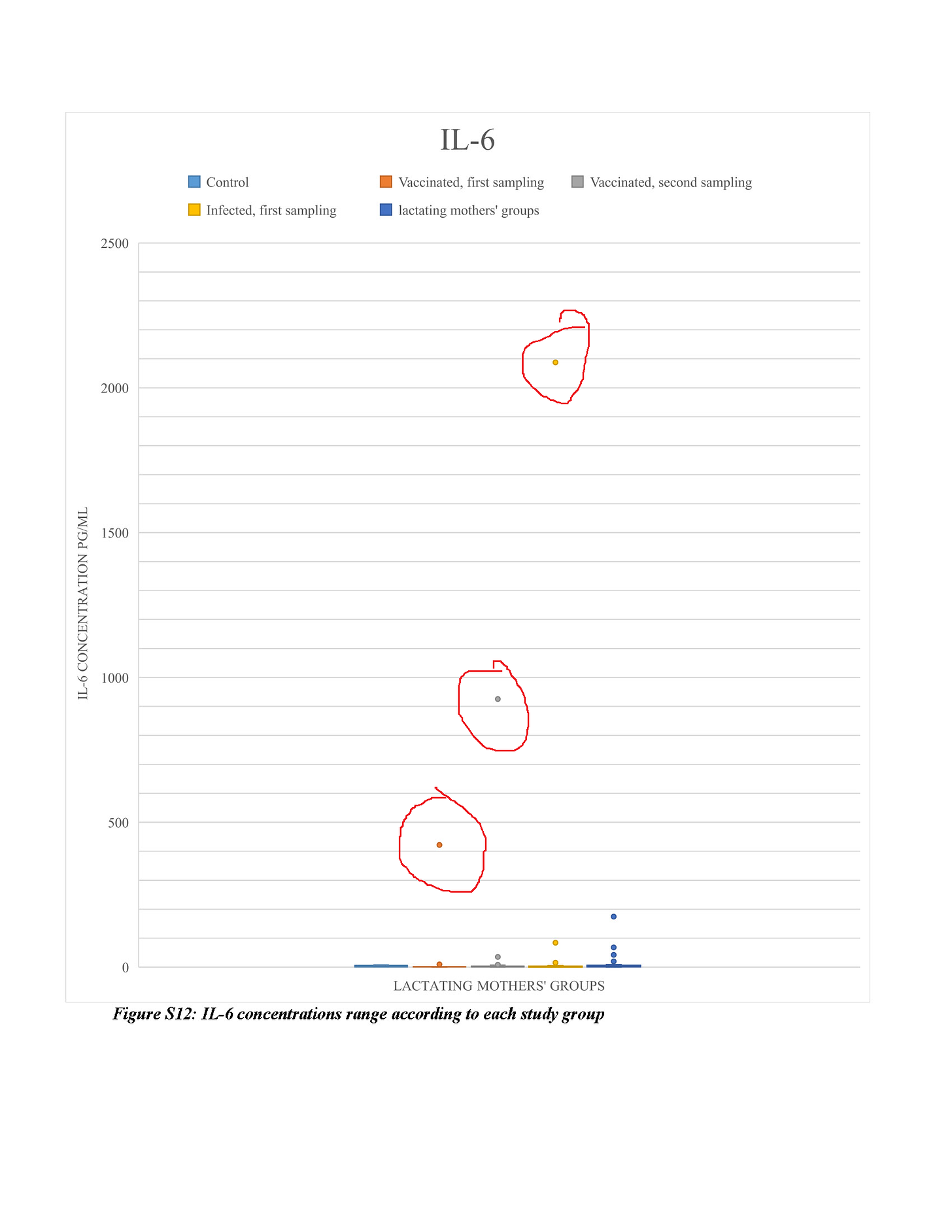
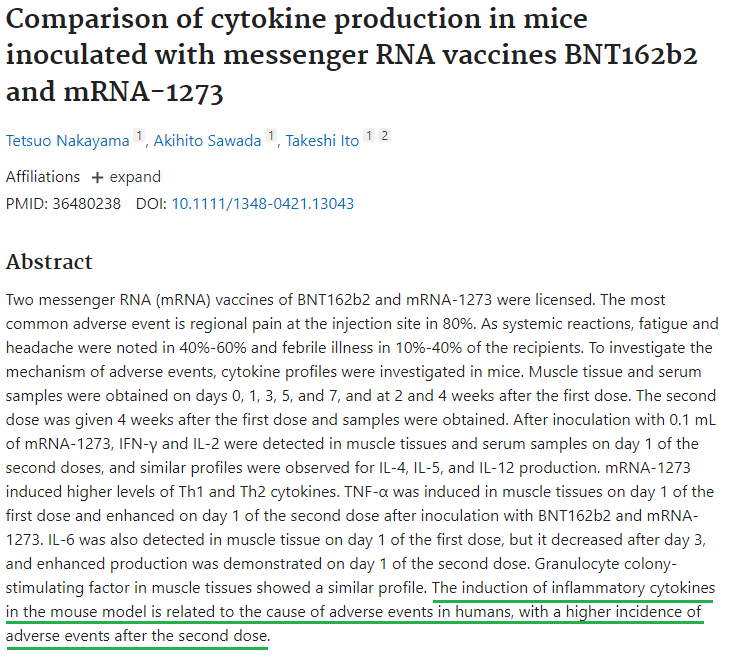
From the study:
We also demonstrate the advantages of breastfeeding by highlighting that anti-SARS-CoV-2 antibodies are transferred after COVID-19 disease or vaccination.
Ok, so if the antibodies are transferred to the child through breastfeeding, are the mRNA ‘instructions’ to make the spike protein (or the spike protein itself)from the vaccine also passed along to the children?
If they are, then it stands to reason that this would be exactly the same as giving the vaccine to the child....with the same potential side effects.
I’m no scientist, but none of this sounds safe to me....
In an environment devoid of big pharma treachery and tyranny, this all would have been thoroughly tested during trials and studies pre-mRNA gene altering injections being released into the world. An independent FDA would have insisted on such testing. The fact that it wasn't by any means, suggests that mRNA gene altering injections are extremely toxic to all. We live under a medical system which is becoming increasingly toxic to life on the planet.